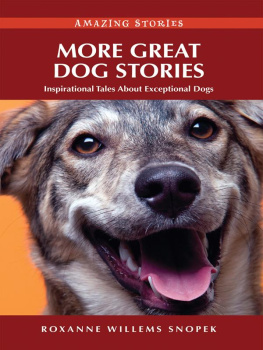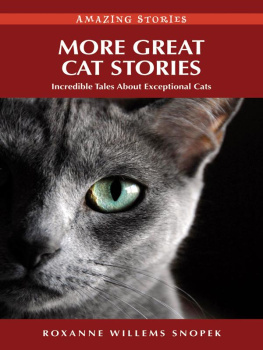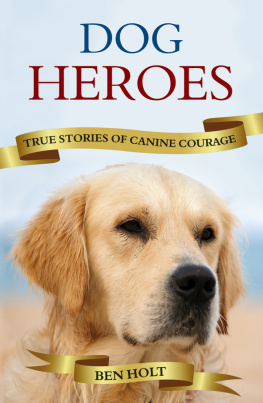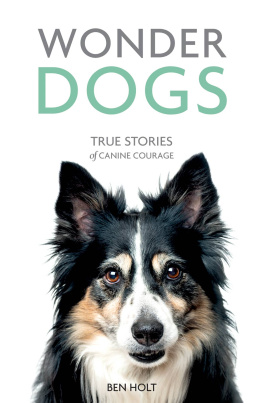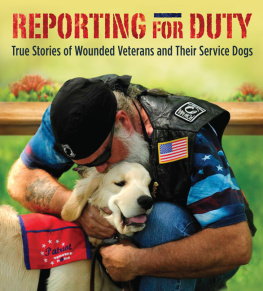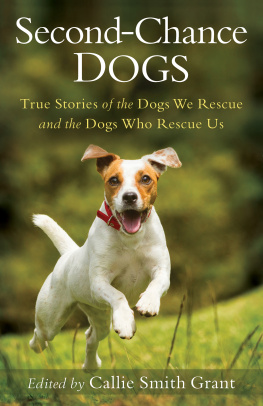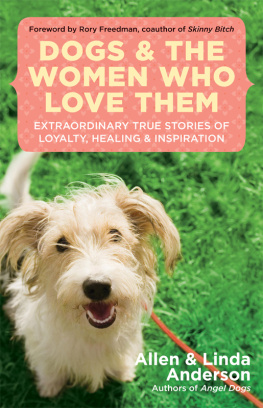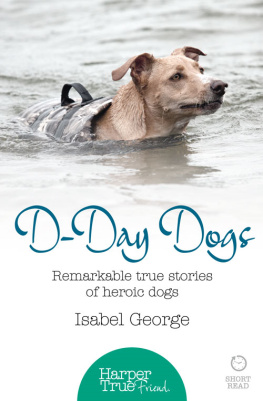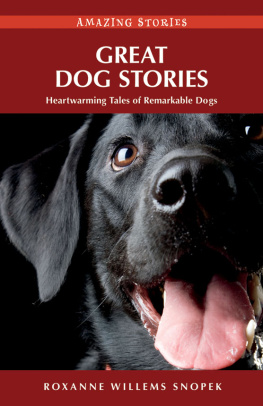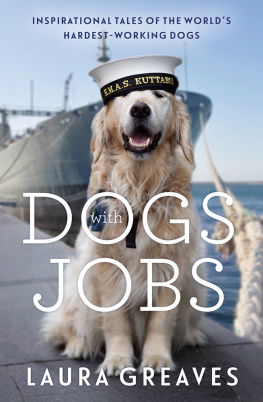CHAPTER
Large Dog Needs Good Home
In January 2005, an urgent plea came from the Inuvik SPCA, at the point of the map where the Northwest Territories meets the Yukon. Could someone help a St. Bernard who needed to get down out of Inuvik? Because giant-breed dogs are difficult to house, many shelters, especially those in small communities, prefer to place them in foster homes or transfer them to breed-specific rescue groups. Inuvik had no place willing or able to take a young, untrained, 70-kilogram dog, and there are no breed-specific rescue groups in the area.
Fortunately, the e-mail went across Canada to Krys Prichard, dog-placement coordinator for Trinity of Hope Dog Rescue, headquartered in Manotick, Ontario. Trinity of Hope Dog Rescue is an organization committed to rehoming abandoned or unwanted giant breeds, especially St. Bernards and Newfoundlands. The rescue community is small, and we were able to network with our representative in Edmonton, says Krys. But my first thought was, Oh my God, Inuvik! Let me get a map.
Krys had arranged many such rescues, and she knew there was much to be done before theyd even know if this dog would make a suitable pet. Most of them need between five and seven hundred dollars worth of veterinary care before theyre ready to be placed, and thats with the rescue discount, she explains. They need to be thyroid-tested, they need treatment for parasites, they need vaccines, they need to be spayed or neutered and sometimes they need eye surgery.
But when Krys learned the history of this dog, named Ruby, she knew they would do everything they could to help her. Rubys original owners, who lived in Inuvik, had purchased her from a breeder in the Edmonton area. Within the year, their family situation had changed and they no longer wanted her. They gave her away to a family who quickly lost interest in her as well. Ruby spent most of her time chained outside in the backyard, and when winter hit, she was in trouble. A good Samaritan felt sorry for the dog and offered to pay $100 for her. The second owners agreed, but when the new owner went to get her, he found things were worse than hed thought; all but one foot of her chain had frozen to the ground. He literally had to chisel her out of the ice. She was an 18-month-old puppy, notes Krys. The breed standard states that females should be about 60 centimetres at the shoulder. With only 30 centimetres of free chain, this dog couldnt do anything but lie down.
The first hurdle was the more than 3,000 kilometres between Inuvik and Edmonton. Over the next three weeks, telephone calls and e-mails flew from one person to another, looking for a way to get this dog back to civilization. We knew it would cost $1,200 for shipping alone, to get her out of the north, says Krys. A registered charity, Trinity of Hope is supported by community members and philanthropists, but this would severely tax their resources. Then they got the return phone call that changed everything. Canadian North Airlines contacted us, says Krys. The president of the airline himself called and said, Yes, we can do this for you. That donation of the flight saved Rubys life. And they didnt just stuff her crate into the cargo hold; they brought her out in style. Ruby and her giant dog kennel rode the entire way in the seat of honour, right behind the pilot. They even donated a seat for a volunteer to accompany her.
Krys knew they had to do something to express their appreciation. We named her Trinity of Hopes Canadian North Gem, says Krys. Our Miss Ruby. When Air Canada donated a flight to rescue a dog from Gander, Newfoundland, they named him Air Canadas Tanner Brown. WestJet has also expressed their willingness to help, and its only a matter of time until they have a dog named after them as well. We are very humbled by the support we receive in the community to help these big guys, Krys said.
Our Edmonton representative spent countless hours getting Ruby ready to be adopted. He got her into a foster home, made sure she got cleaned up and dewormed, switched her from raw blubber to a proper diet, vaccinated and spayed her, had her dewclaws removed and had a microchip implanted. All this while running his own business and taking care of his parents. A true saint, Krys explained.
Finally, Ruby was ready to meet her new family. All our homes are approved on a trial basis, says Krys. They arent just given a dog and then left on their own. Ruby went to a retired couple who were prepared for the demands of a giant breed and now, at two years of age, she is the light of their lives. Shes finally getting the training, care and love she needs to blossom. She went from being totally ignored, without much human contact at all, to being the centre of attention, says Krys.
Rubys case ended well, but Krys worries about all the other dogs she hasnt heard of yet, especially those in remote locations. Breeders should not be selling dogs to people who live in places like Inuvik, she says. There are no veterinarians up there; they might have one that comes in three or four times a year, but if something happens to the dogs in between, the people take them out and shoot them.
Krys says the onus is on breeders to properly screen buyers and prepare them for life with a large-breed dog. St. Bernard breeders often sell puppies without emphasizing that they need to be family dogs, not outdoor dogs. Inexperienced owners love the puppy, but are unprepared for an energetic adolescent dog that may outweigh them. The St. Bernard puppy gets to be 18 months old and very big, Krys says. Hes untrained, roaming and barking, so he gets dumped.
Most purebred dog fanciers are very protective of their breeds. The best breeders require puppy buyers to sign an agreement stating that, if they are unable to keep the dog for any reason, at any time in the future, they will return it to the breeder. Such breeders often participate in breed-specific rescue and foster programs. Part of Trinity of Hopes mandate is to work with these purebred-dog rescue groups, getting the biggest of them out of municipal shelters and into appropriate foster homes. This allows the shelters to focus their resources on the mixed-breed dogs that have no such groups to advocate for them.
We focus on big dogs, because thats what we have, says Krys. When the Ottawa Humane Society became rescue-friendly in 1998, I went to them and asked, What can we do to help you? My husband and I had Newfs at the time, and I knew that giants are difficult because they dont do well in shelters.
So Krys contacted the breed rescue groups whenever a purebred dog came into the shelter. Then she helped get the dogs out of the shelter and into the safety of the breed rescue group. Between 2000 and 2001 I transported 176 purebred dogs from the humane society to breed rescue groups located in various places. She didnt restrict herself to large-breed dogs at the time; everything from shelties, corgies and collies to labs and boxers were scooped and sent to safe havens.
Although Krys and her husband began doing giantbreed rescue in 1993, it wasnt until 1998 that an abandoned Rottweiler named Hope galvanized Krys into creating an official rescue group. The Rottweiler was sedated, all ready for euthanasia, when they called us, remembers Krys. I couldnt take her myself, because I had dogs that were being kept quarantined, awaiting international health certificates. So I called around until I got a foster home. Three of us ended up working together, so we called ourselves Trinity of Hope.
Their mandate is to keep an eye out for Newfoundland and St. Bernard dogs that end up in shelters. They also provide assistance for groups transporting dogs from one location to another. Trinity of Hopes biggest strength is the network of committed dog lovers supporting them. One year, Krys was contacted about a dog that needed to be relocated from Edmonton to Winnipeg. We had a volunteer who drove half of the wayabout 11 hours from Edmonton, says Krys. Another volunteer from Winnipeg drove out to meet him. Thats pretty good commitment.
Next page
